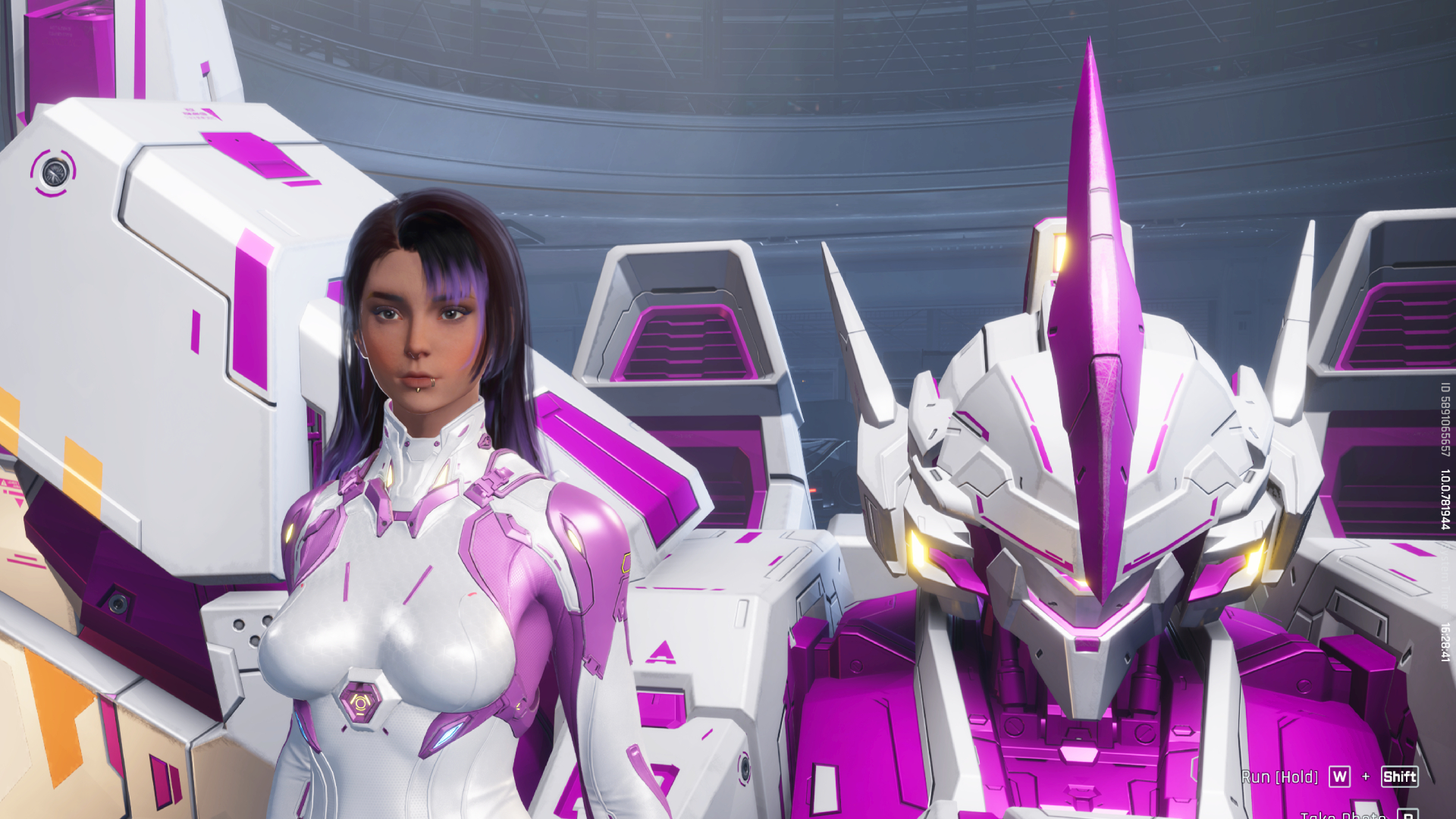Underneath the piles of free-to-play monetization, daily login rewards, and horny cosmetics there’s a hint of an enjoyable hero shooter in Mecha Break. For a certain type of mech obsessive, it’s a paradise of steel, sparks, lasers, and giant swords. Every time you enter a match you watch your pilot buckle up, achieve full synchronization, and grit their teeth as they’re about to be shot like a bullet into battle.
But it doesn’t take very long before Mecha Break stalls out. Its commitment to the fantasy of piloting big metal war machines is surprisingly shallow once the novelty wears off. While it’s certainly awesome to lock axes with an enemy mech at twilight or to feel the heat of a rocket as you desperately dash out of its path, these moments have lost their oomph the more I’ve played.
Need to Know
What is it? A free-to-play mech hero and extraction shooterRelease date: July 1, 2025Expect to pay: Free to play (cosmetics, battle pass, gear)Developer: Amazing Seasun GamesPublisher: Amazing Seasun GamesReviewed on: RTX 5090, Intel Core i9 12900K, 32GB RAMMultiplayer: YesSteam Deck: VerifiedLink: Steam
Mecha Break gives the impression of a game that cares about the fantasy and customizability of its mechs, but it’s all a smokescreen for one of the more repulsive monetization schemes in gaming.
I should’ve known from the start. The intro sequence plays like a singleplayer Armored Core level where the mission goes awry and you’re assaulted by a mech infected by a parasitic organic material known as Corite. Everyone back at home base thinks it could be sentient and wants their hands on it before the rest of the world.Immediately after, you’re launched into a barrage of free-to-play menus which urge you to pay $0.99 for 100 Corite. The mysterious substance that sets up the entire premise of the game is really just the premium currency you use to buy bunny ears for your pilot.
Pay up
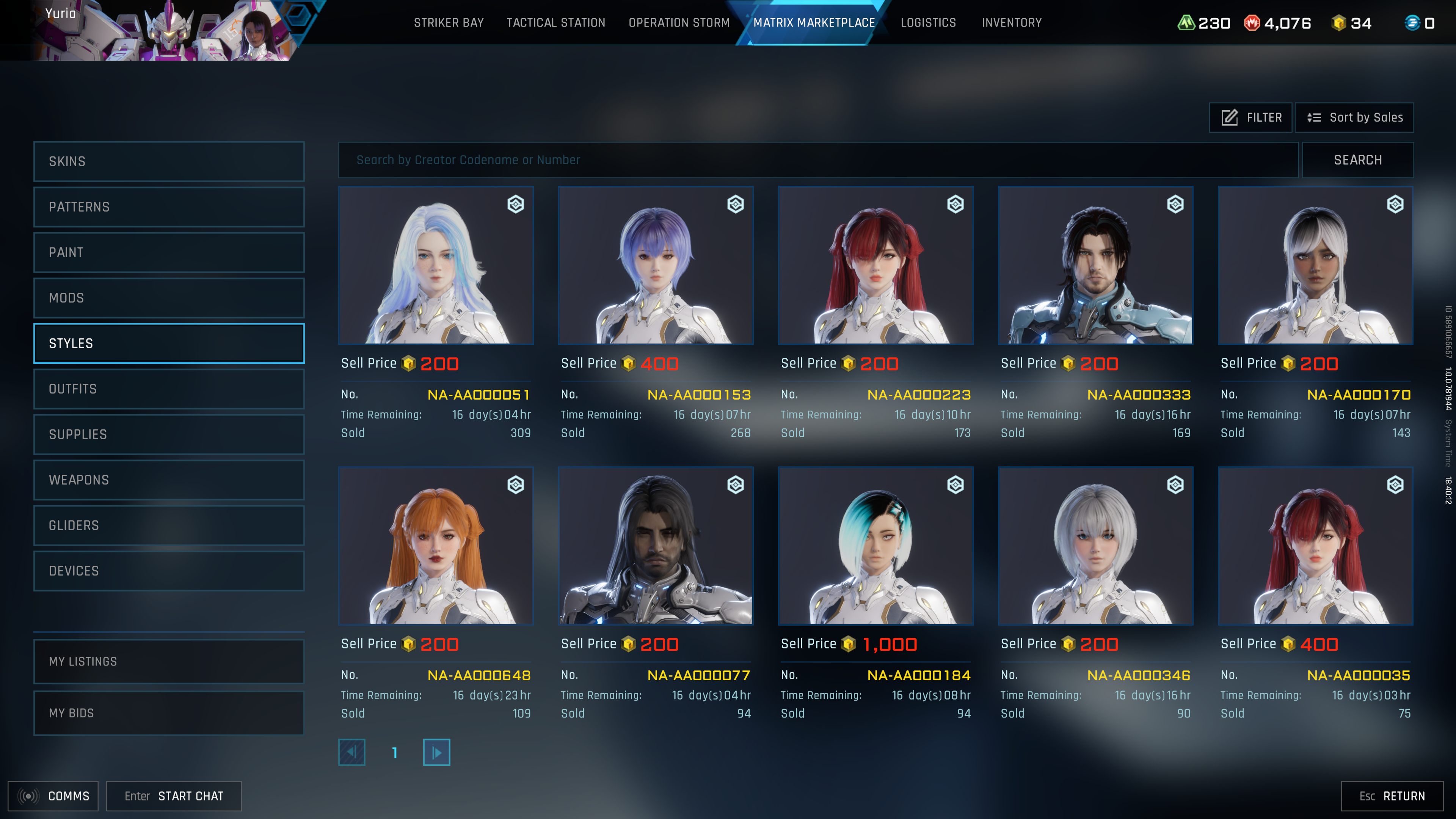
(Image credit: Tyler C. / Amazing Seasun Games)
Mecha Break locks away huge chunks of its customization—more than most games—to fuel an economy around its premium currency.
Mecha Break is careless with its own fiction because it primarily exists to nickel-and-dime players at every corner. This is a game built to wield the pieces of your favorite mech anime against you. There’s an entire marketplace where players can sell their custom made pilots (and other cosmetics) for Corite because the developers—or, more likely, the suits above them—are betting on people paying for the shortest route to playing as Shinji, Asuka, or Rei. The one bastion from Mecha Break’s claustrophobic transactions are the mechs themselves, each hyper-detailed and customizable for cosmetic purposes—all the equippable gear is reserved for its extraction mode. You can dye individual parts for a small amount of its free currency, which is nice, and they’re all cheap enough to earn after playing a handful of matches. Unfortunately, dyes make up the majority of what you can earn for free without engaging in a community-driven auction house.
Everything else has a price. Eyebrows, hair styles, lipstick, jewelry, and eye colors will cost you a few dollars in Corite. Or you may get lucky and catch another player selling them for cheap on the auction house, which happens to be the best way to freely earn Corite. I bought a loot box for the game’s extraction mode and sold it so I could buy a lip ring, for example.
Mecha Break locks away huge chunks of its customization—more than most games—to fuel an economy around its premium currency. This has the effect of making strategic trading more than a means of progression. Speculation is a huge component of Mech Break—arguably more consequential than the part where you actually fight stuff—and it sucks.
To earn anything for free, you have to pay attention to what’s hot at the moment and play the auction house like it was an MMO. I’d find this more tolerable if it wasn’t for how little else Mecha Break has going for it as a shooter.
Sauceless
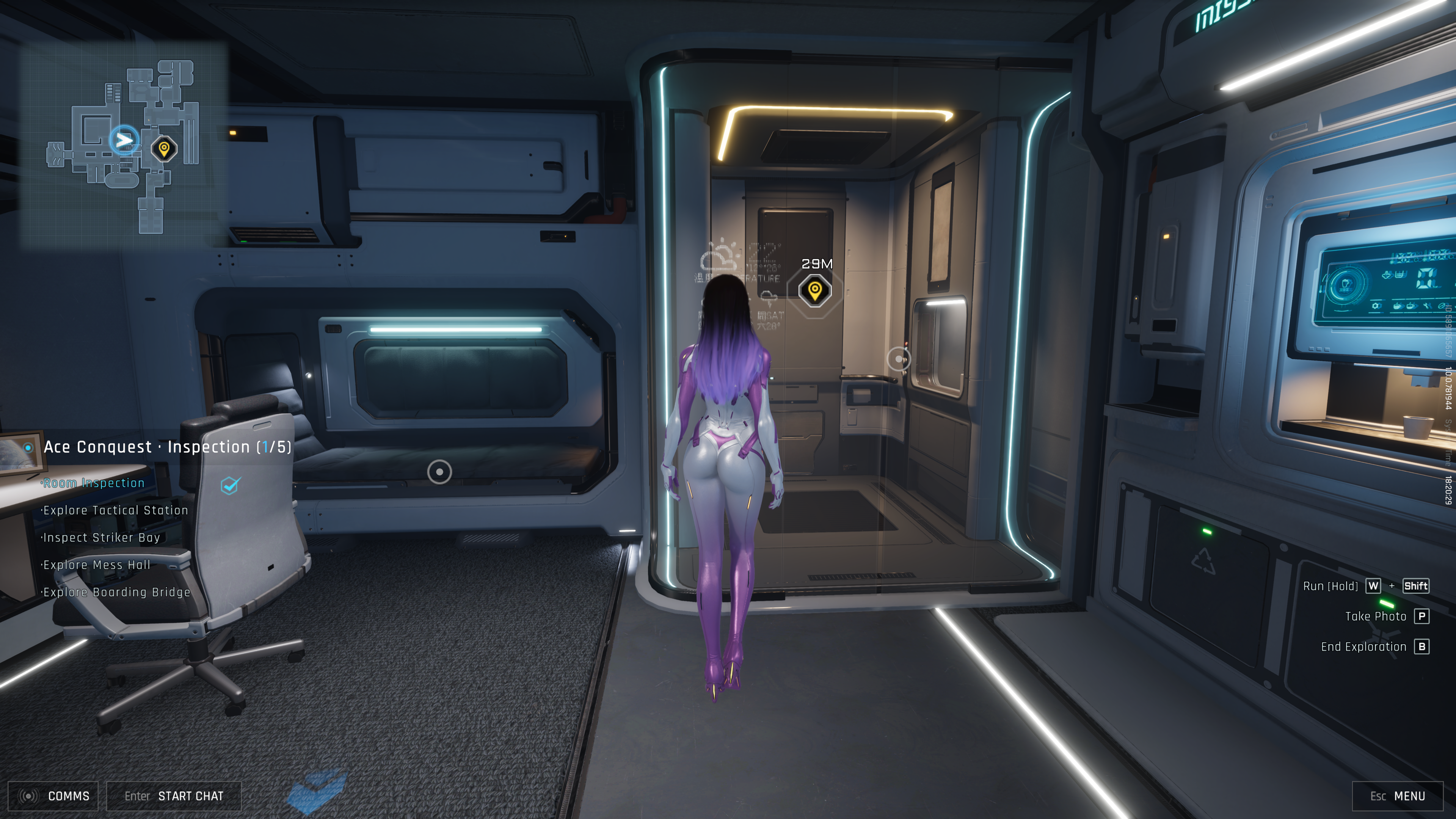
(Image credit: Tyler C. / Amazing Seasun Games)
It turns out, deciding early on not to treat Mecha Break like a money hole leaves half of the game feeling pretty empty. Developer Amazing Seasun Games heavily emphasizes the hangar, a hub area you can explore any time as your pilot who, by default, owns no other clothes than their skin-tight suit.
Want something more comfortable to wear? That’ll cost you. Nameless NPCs walk the halls of what is effectively an elaborate trophy room for everything you own. You can pose your character just right with the surprisingly robust photo mode and take selfies on the catwalk by your mech, but oddly, there’s no shared social space or lobby. You’ll always be alone with your toys, which is a little strange for a game that is ostensibly about teamwork.
This is also where it’s clear who the target audience is for Mecha Break. This game is full of so much anime-style fan service I feel the need to tell spectating friends that “I swear it’s not like this all the time”—except it is.
At any point in the hangar you can enter a bathroom and not only watch a foggy scene of your pilot taking a shower, but also watch them using the toilet. There is a bar where you can pay to unlock with a stripper pole that female pilots will seductively grind against while male pilots awkwardly dance next to it like they’re allergic. I quickly understood why they made the photo mode so robust—you have full control of every bone in your pilot’s body to orient them however you want, and you can guess what players have already started doing with it.
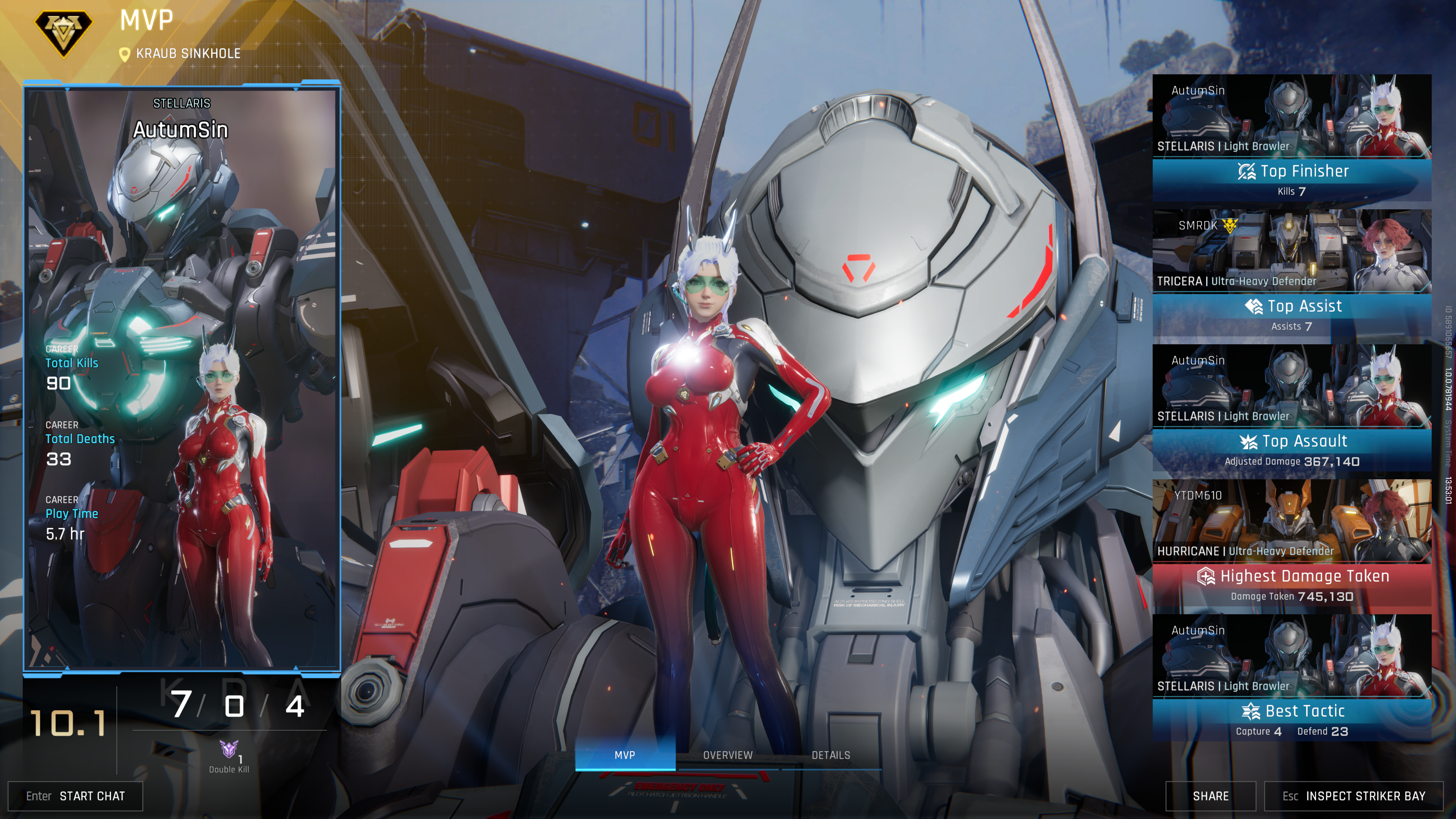
(Image credit: Tyler C. / Amazing Seasun Games)
I’m not saying mech games shouldn’t be sexy, but Mecha Break is about as sexy as playing with a naked Barbie doll. The dizzying jiggle physics of female pilots, the relentless ass shots, and the total absence of anything on the same level for the male pilots is, frankly, boring. If you want to be horny, you gotta dream bigger. Mecha Break is cynically sexy, focused squarely on surface-level ogling as a vehicle for selling progressively skimpier clothes and accessories.
As a result, the hangar, and all the things you can do in it, are just another reminder that a lot of Mecha Break is more interested in leveraging empty tropes to fuel a business model rather than enthusiastically being a videogame.
Shooting gallery
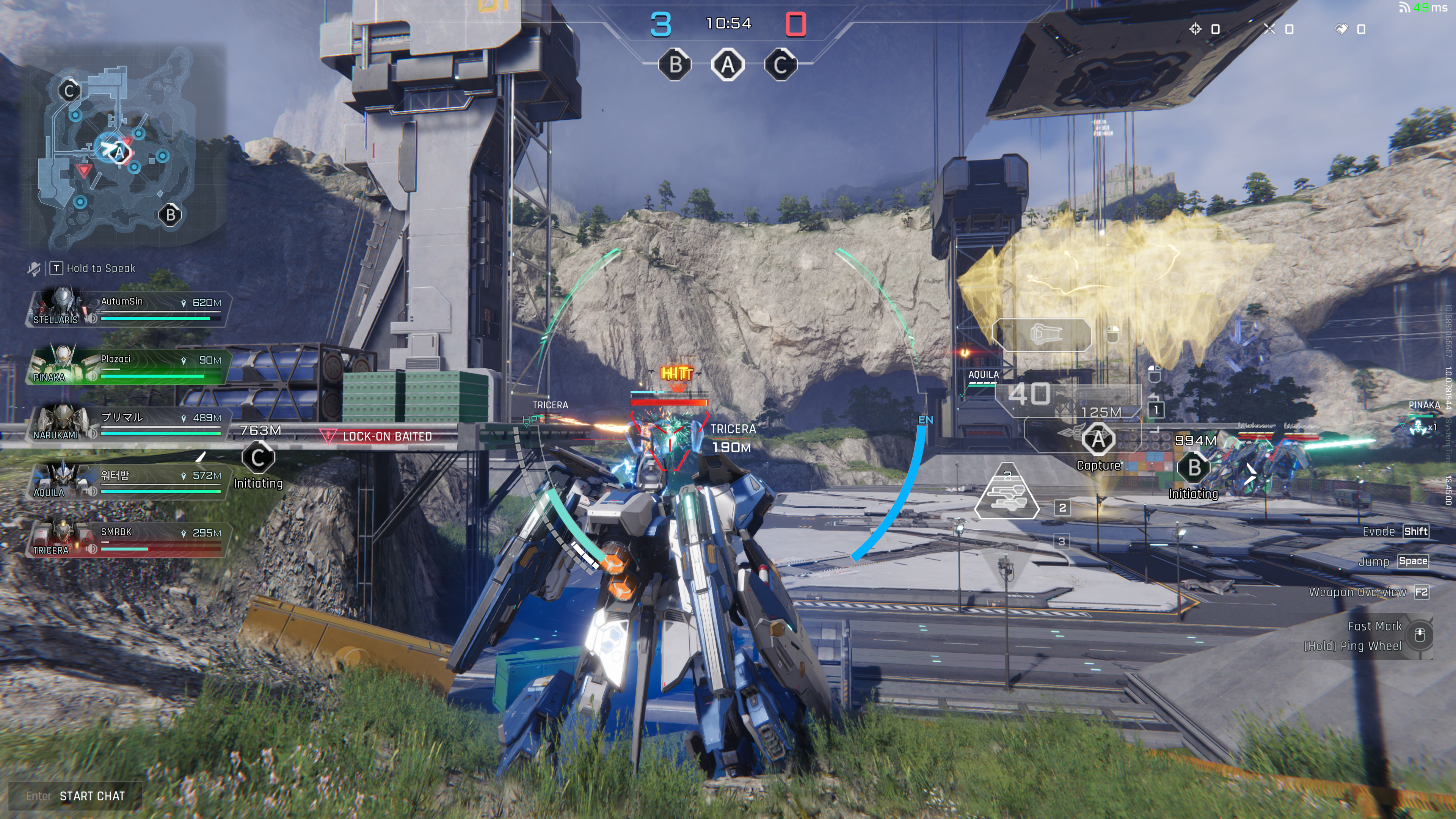
(Image credit: Tyler C. / Amazing Seasun Games)
Actually playing the team-based hero shooter buried deep inside Mecha Break’s morass of menus and price tags is kinda fun for a few hours. There are 13 mechs to choose from (three of which have to be unlocked through grinding or premium currency) that are essentially heroes with unique abilities. I started with the support mech Luminae that has a healing and damage mode that sorta works like Overwatch’s Moira. Keeping pace with agile teammates as they flew into battle so I could shoot healing drones at them was satisfying to pull off in the heat of battle.
Some mechs, like Welkin, can ram straight into you and ignore your layer of armor to start slashing away your health with energy swords and axes. Most mechs have a way to break away and flee, which gives Mecha Break’s 6v6 matches a much slower pace than most hero shooters. There are snipers with auto-aim and yet you rarely get obliterated out of nowhere. All that extra time opens the door for more tactical plays based around managing your fuel for dodging and floating in the air, and gives space for cinematic duels between two pilots as they dance around each other in a flurry of smoke and rockets.
The problem is that none of Mecha Break’s modes or maps have much of an effect on how fights play out. There’s no real difference between capturing an objective or pushing a payload when most of the action happens over open canyons or bases. It’s rare to have the environment push back on you or even give you much of an advantage for trying to utilize it. And the lack of threatening ultimate abilities or anything worth comboing with your teammates flattens the game into 10-minute free-for-alls where I couldn’t tell you the names of the other five people on my team.
Mecha Break has a lot of the pieces of a worthy hero shooter, but it has none of the connective tissue that gives each mech a purpose in a match
Even though the mechs roughly fit into roles—attacker, defender, and support—most of them are so similar that it feels like you’re just picking a different flavor of gun. You can shoot while hunkered down as Tricera, while flying as Falcon, or while flying in a slightly different way as Skyraider. I tried out Aquila, the mobile sniper, for a match and briefly felt like I had found the most broken mech in the game. And then I played a few more and realized all I was doing was shooting high-powered shots over and over until the little red enemies on my screen exploded. Overpowered or not, when you remove the mechs from the equation, it was about as thrilling as Duck Hunt.
Mecha Break has a lot of the pieces of a worthy hero shooter, but it has none of the connective tissue that gives each mech a purpose in a match. You’re never asked to engage with anything resembling teamwork, nor are you put in situations where your chosen mech shines. Much like the hangar, matches eventually feel like big toy boxes with nothing to do but hope something cool happens.
A real drag
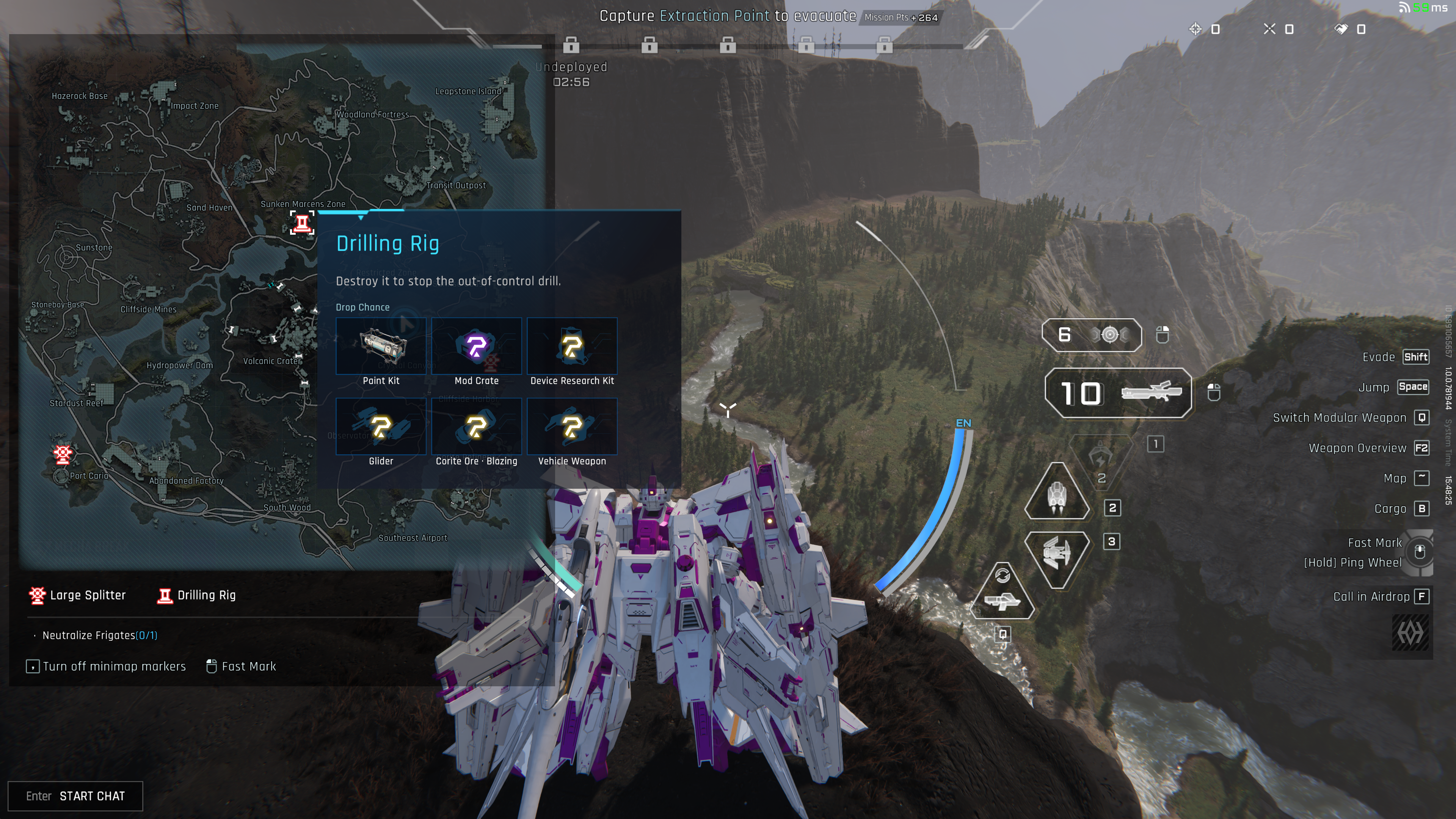
(Image credit: Tyler C. / Amazing Seasun Games)
Like several recent free-to-play shooters, Mecha Break has an extraction mode that is, as far as I can tell, completely pay-to-win if you want to have any long-term success in it. It’s called Mashmak, and it flips the 6v6 script by dropping you into a big map with objectives to complete and gear to loot while other players are trying to do the same.
You pick a difficulty and queue into a match with objectives to complete for loot, like unique weapons or mods to increase your mech’s mobility and durability. Or you can open up the auction house and buy exactly what you want. Mecha Break’s extraction mode is balanced around its marketplace rather than player skill. Those with the time and money to gear themselves up through the menus can jump into it and obliterate anyone who can’t do the same.
It’s possible to queue into matches based on the kind of gear you have to avoid the whales, but it’s a crummy solution, as equalizing gear sands down the deliberate asymmetry that extraction shooters are known for. And given everything else about Mecha Break’s egregious monetization, it’s hard not to cynically think Mashmak mostly exists as a “look at me” playground for its biggest spenders.
If you thought the monotony of the normal modes was bad, try playing one where it’s even slower and uneventful. Sniping down clueless NPCs to complete objectives for forgettable loot and firing at other players from miles away is deflating when it should be empowering.
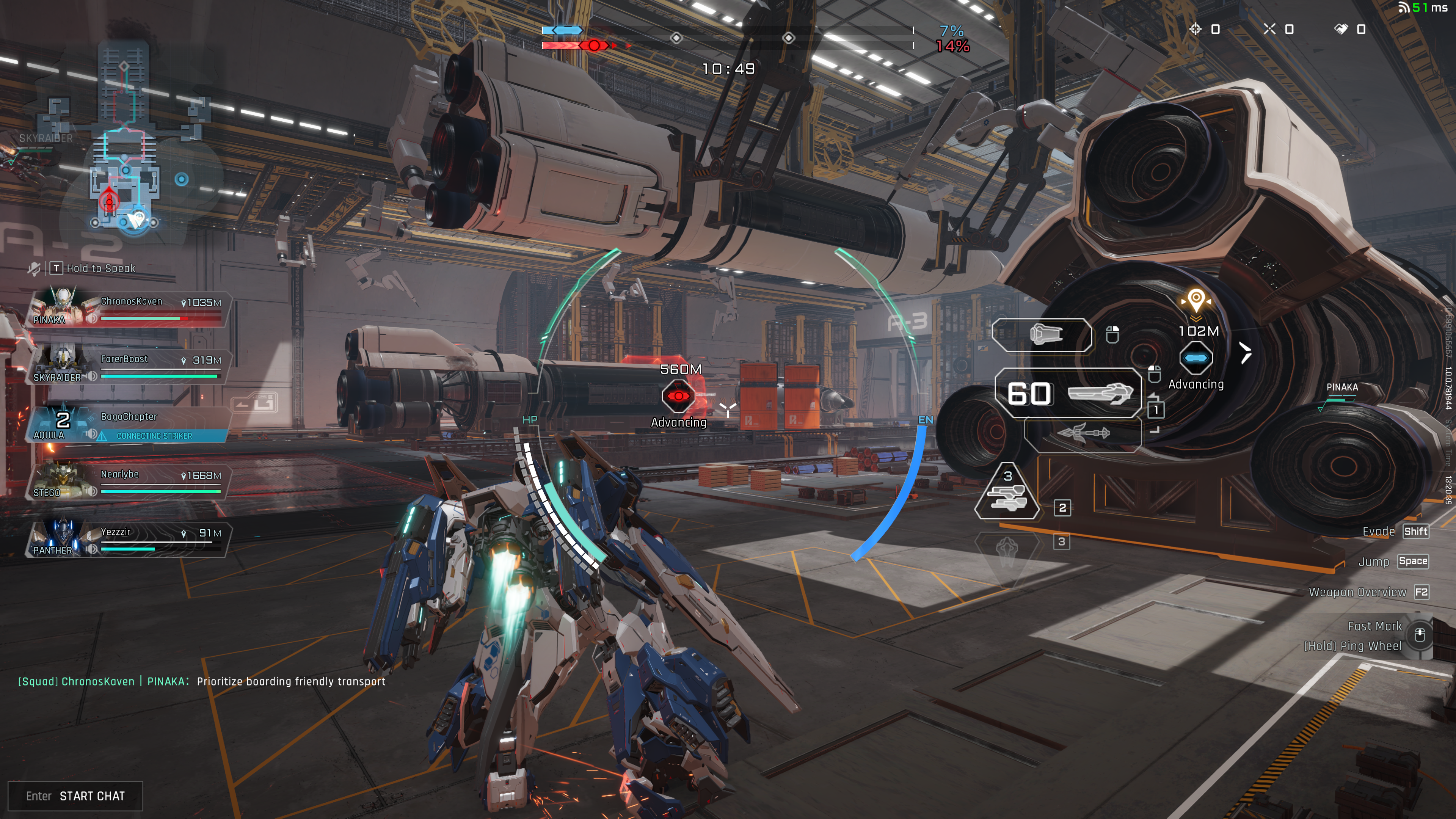
(Image credit: Tyler C. / Amazing Seasun Games)
I hopped into a match, cleared out a base of AI-controlled enemies and ran into one other player who seemingly was AFK. I found some ammo and a long-range laser beam weapon, and then spent the next 20 minutes with nothing to use them on. The wide open map problem strikes again, leaving you boosting over mountains for long stretches of time while looking for anything interesting to do.
I kinda liked how chill it was, at times feeling like a singleplayer open world game. But getting sleepy during a high-stakes extraction mode isn’t a good sign, especially this early in the game’s live service life.
There are simply better extraction shooters out there, and ones that don’t reserve most of the fun for people with loads of disposable income.As someone who can tolerate their fair share of free-to-play nonsense, Mecha Break just doesn’t feel worth the hassle. A few hours to live out your Gundam-inspired fantasies isn’t enough to sustain what is a surprisingly dull game. I had some fun, but at the cost of having to dig through a live service shooter rotten with ads and meaningless currency dragging down all the good parts of piloting big dangerous super weapons. Mech fans deserve better than this.
From PCGamer latest via this RSS feed


